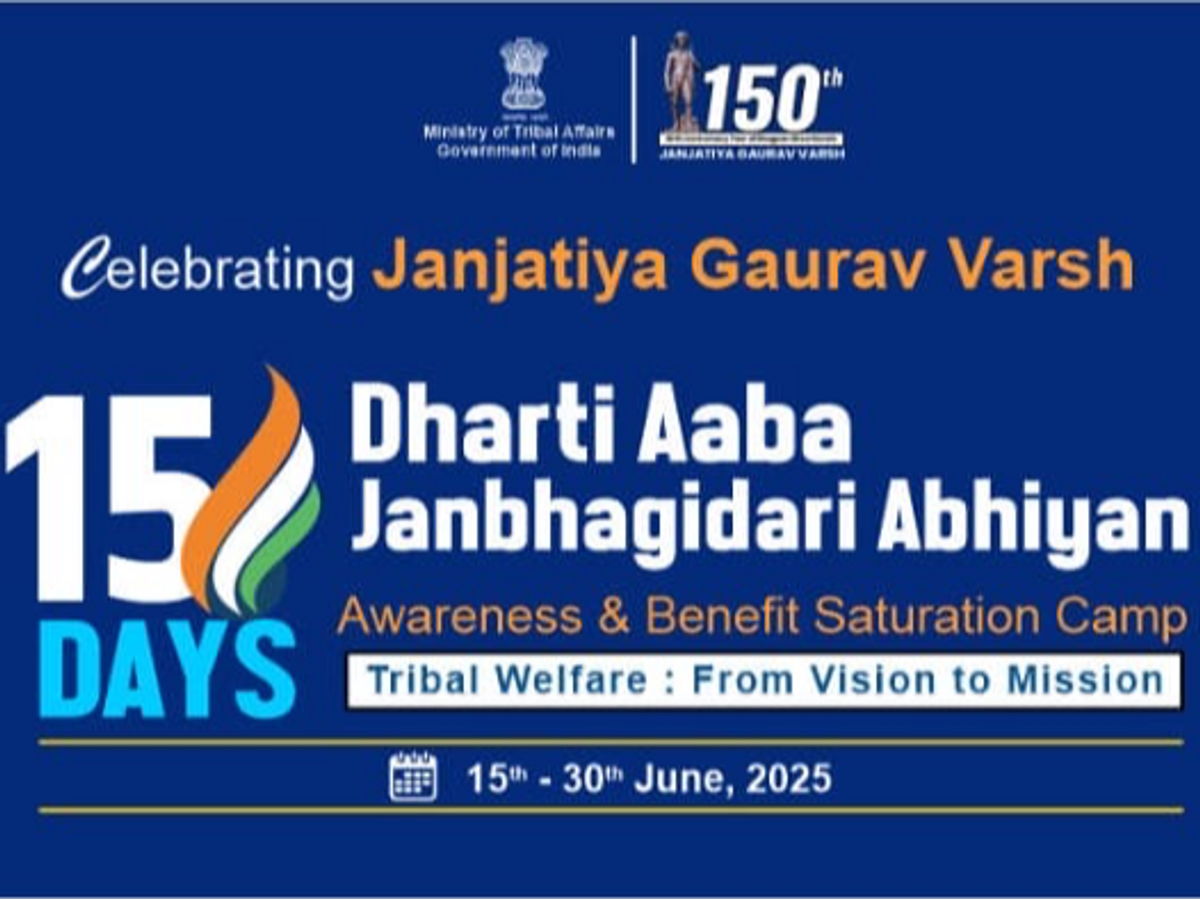Dharti AabaJanbhagidari Abhiyan (DAJA)

- 28 Jun 2025
In News:
In a landmark initiative for tribal inclusion, the Government of India has launched the Dharti AabaJanbhagidari Abhiyan (DAJA)—India’s largest-ever tribal outreach and empowerment campaign. The programme aims to ensure saturation of welfare schemes and promote tribal pride and participation, covering over 1 lakh tribal villages and PVTG habitations across 31 States and Union Territories.
What is DAJA?
- Full Name: Dharti AabaJanbhagidari Abhiyan — named in honour of Bhagwan Birsa Munda, a revered tribal freedom fighter.
- Launched by: Ministry of Tribal Affairs, Government of India.
- Nature: A people-centric campaign focused on participatory governance and last-mile delivery of services among Scheduled Tribes (STs) and Particularly Vulnerable Tribal Groups (PVTGs).
Objectives of DAJA
- Saturate government welfare schemes across all tribal settlements.
- Empower over 5.5 crore tribal citizens through Janbhagidari (people’s participation).
- Preserve and promote tribal identity and cultural heritage, invoking the legacy of Birsa Munda.
- Strengthen last-mile governance through technological and administrative convergence.
Key Features:
Feature Description
Geographic Coverage - 1 lakh+ tribal villages, including remote PVTG habitations, across 31 States/UTs.
Scheme Integration - Converges services such as Aadhaar, Ayushman Bharat, PM Kisan, PM
Ujjwala, Jan Dhan, pension schemes, and Forest Rights Act (FRA) claims.
Five Foundational Pillars -
- Janbhagidari (people’s participation)
- Saturation of welfare benefits
- Cultural inclusion
- Convergence of schemes
- Last-mile delivery
Technology-Driven Monitoring - Use of real-time dashboards and data analytics for
transparent tracking and reporting.
Cultural Revival - Celebrates tribal cuisines, folk arts, handicrafts, and oral traditions
during outreach camps to reaffirm cultural identity.
Significance:
- Governance: Represents a shift toward targeted and integrated tribal welfare, reducing administrative fragmentation.
- Inclusion: PrioritisesPVTGs, often the most marginalised and underserved groups.
- Empowerment: Embeds a participatory model, aligning with the spirit of democratic decentralisation.
- Cultural Reaffirmation: Bridges the gap between development and cultural identity, crucial for tribal dignity and preservation.
